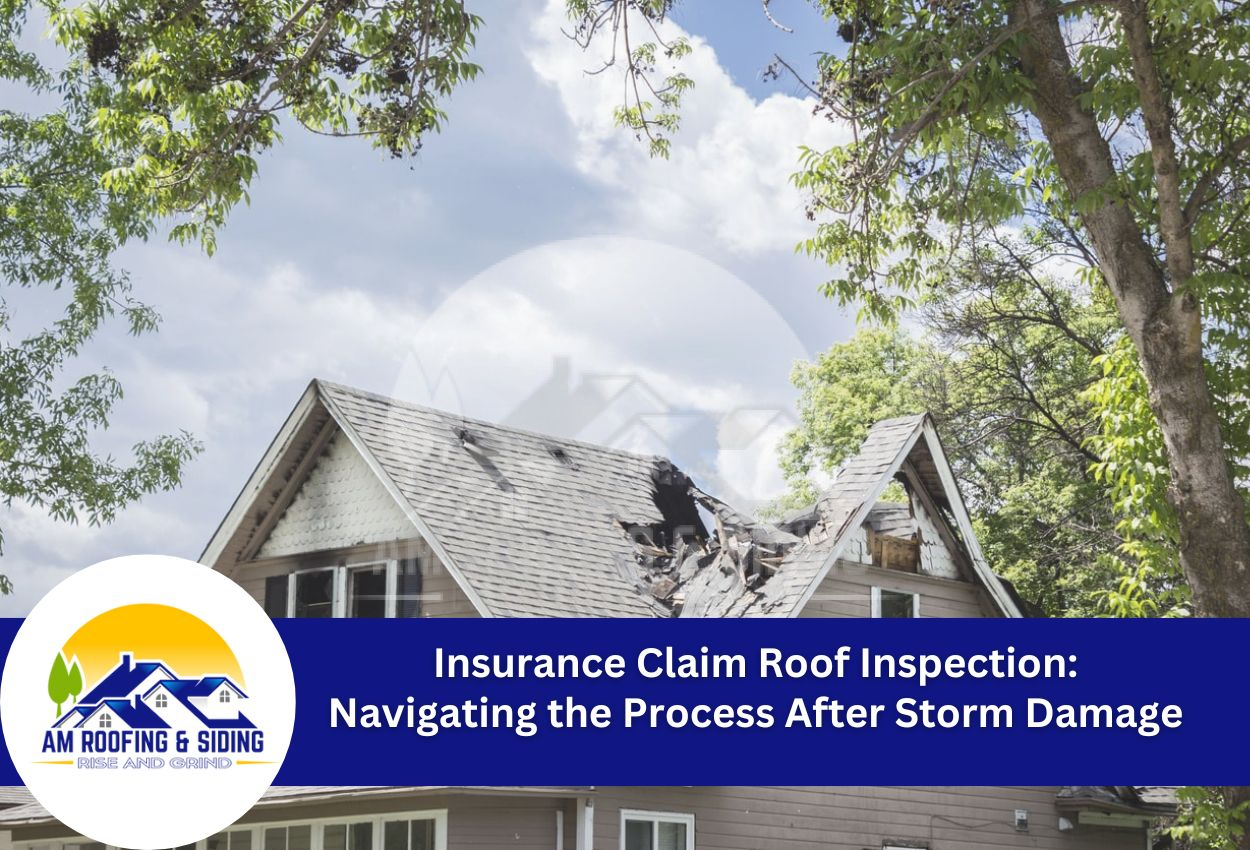When severe weather strikes Central Ohio, your roof often takes the brunt of the impact. Hail, high winds, and heavy rainfall can cause significant damage that requires professional attention and may qualify for insurance coverage. Understanding how to navigate the insurance claim roof inspection process is crucial for homeowners facing the aftermath of storm damage.
An effective insurance claim starts with a thorough roof inspection that documents all damage accurately. Many homeowners find themselves uncertain about where to begin, what documentation is needed, or how to work with insurance adjusters to ensure fair claim settlement. The process can seem overwhelming, especially while dealing with the stress of property damage.
The key to a successful roof damage claim lies in proper assessment, documentation, and understanding your policy coverage. Insurance companies require specific evidence of storm damage before approving claims, making the roof inspection a critical step. Knowing what adjusters look for during their assessments can help you prepare and increase your chances of claim approval.
Roof damage from storms can range from obvious issues like missing shingles to subtle problems that only professional roofing contractors can identify. Documenting these damages promptly after a storm provides the strongest case for your insurance claim and helps ensure your Central Ohio home receives the restoration it needs. In this guide, we’ll walk you through signs of storm damage, the claim inspection process, and more, so you can file your claim with confidence.
Identifying Storm Damage: What Insurance Companies Look For
Insurance companies rely on specific evidence when evaluating roof damage claims. Different weather events leave distinctive patterns that adjusters are trained to recognize. Hail damage typically appears as random circular impacts that dislodge granules and may create soft spots in the shingles. Wind damage often manifests as lifted, creased, or missing shingles, usually concentrated on roof edges and corners. Fallen debris might cause punctures, cracks, or visible impact points that compromise your roof’s integrity.
Before professionals arrive, homeowners can conduct a preliminary assessment. From ground level, look for missing or visibly damaged shingles, dented gutters, or damage to vents and flashing. Inside your home, water stains on ceilings, attic leaks, or unusual drafts can indicate roof compromises. If you spot damage, document it by taking pictures from multiple angles.
When Central Ohio experiences severe weather, being able to identify legitimate storm damage helps strengthen your insurance claim. Remember to check your attic for water stains or light penetrating through the roof. Fallen granules in gutters and downspouts also indicate potential shingle damage. While this self-assessment is valuable, a professional roof inspection from a qualified contractor provides the thorough documentation insurance companies require for processing your claim.
The Professional Roof Inspection Process Explained
A professional roof inspection for insurance claims follows a systematic approach designed to uncover all damage, both obvious and hidden. During this process, experienced roofing contractors first examine the exterior, carefully assessing each section of the roof for missing shingles, granule loss, dents from hail, and lifted materials. They inspect flashing around vents and in valleys where leaks commonly begin. The evaluation continues with a thorough examination of gutters, downspouts, and ventilation systems for signs of impact or displacement.
Modern roof inspections utilize advanced technology like infrared cameras to detect moisture trapped beneath the surface, damage that insurance adjusters might miss during their assessment. These tools can identify compromised areas where water has penetrated but hasn’t yet caused visible interior damage, strengthening your claim significantly.
While insurance companies provide their own adjusters, these individuals often inspect multiple properties daily and may not have specific expertise in Central Ohio’s weather patterns. Local roofing contractors understand how seasonal storms affect different roofing materials in our region and can identify damage patterns specific to our area’s weather. They’re also familiar with local building codes and installation requirements that might impact your claim’s approval.
Having a professional roofing contractor perform your inspection before filing creates documentation that clearly establishes the extent of storm damage, making sure that your insurance claim accurately reflects the true condition of your roof.
Working With Insurance Adjusters: Maximizing Your Claim Results
When it comes time for the insurance adjuster to visit your property after a storm, being prepared can make all the difference in your claim outcome. Before their arrival, clear debris from your yard that doesn’t represent storm damage, organize your documentation chronologically, and ensure safe access to your roof. Many adjusters appreciate seeing photos taken immediately after the storm, which can show conditions before any emergency repairs were made.
During their assessment, adjusters typically follow a methodical process: measuring your roof, documenting visible damage, and taking photos. They may use chalk to mark areas of concern or specialized tools to measure hail impact depths. Understanding that adjusters represent the insurance company’s interests is crucial. While most are professional and thorough, they may overlook damage that a specialized roof inspection would catch. Effective communication with your adjuster includes asking questions about their findings and providing your documentation without being confrontational.
If the adjuster seems to be missing damage your contractor identified, politely direct their attention to these areas and ask them to document their findings. Remember that a thorough storm damage roof assessment often requires expertise that only experienced roofing professionals possess.
Documentation Essentials: Building an Irrefutable Claim
Creating comprehensive documentation is your strongest asset when filing an insurance claim for roof damage. Insurance companies require clear evidence that demonstrates both the extent of damage and its cause. Start by photographing your roof from multiple angles, using a high-resolution camera that captures detailed images of damaged shingles, dents, cracks, and water infiltration points. Take close-up shots of specific damage areas alongside wider shots showing the overall affected sections.
Weather documentation strengthens your case considerably. Save local weather reports, news coverage of the storm, and any severe weather alerts issued during the incident. This evidence helps establish the timing and severity of the weather event that damaged your roof. Central Ohio experiences various storm types throughout the year, each causing distinctive damage patterns that should be clearly documented.
Develop a detailed inventory of all damaged areas using a systematic approach. Create a simple diagram of your roof and number each damaged section, corresponding to your photo evidence. Include previous roof maintenance records and receipts that demonstrate your roof was in good condition before the storm. This documentation prevents insurance companies from claiming the damage resulted from neglect rather than storm impact.
Keep a record of all communications with your insurance company, including names of adjusters, dates, and summaries of discussions. This organized approach to documentation provides the foundation for a successful roof damage claim that insurance companies find difficult to dispute.
What to Know About Claim Denials and Disputes
Even with thorough documentation, roof damage claims can sometimes be denied by insurance companies. Understanding why this happens and knowing how to respond is essential for Central Ohio homeowners. Common reasons for denial include age-related deterioration determinations, missing documentation, policy exclusions, or disputes about the cause. Insurers may claim the damage resulted from wear and tear rather than a specific storm, especially with older roofing materials.
When facing a denial, carefully review the explanation letter from your insurance company. This document outlines their specific reasons and provides information about your right to appeal. Request all documentation the adjuster used to make their determination, including photos and reports. Compare these with your roofing contractor’s assessment to identify discrepancies that could support your dispute.
The formal dispute process typically begins with a written appeal that includes your contractor’s detailed roof inspection report, additional evidence like weather data, and clear explanations addressing each reason for denial. Central Ohio homeowners can request a re-inspection with a different adjuster. If the second assessment still results in denial, you can pursue mediation through the Ohio Department of Insurance, which offers complaint assistance and dispute resolution services.
Professional roofing contractors with experience in storm damage roof assessment can be helpful during disputes, providing expert testimony about damage patterns and helping document how weather events, not normal wear, caused your roof’s problems. Their detailed inspection reports often make the difference in overturning claim denials.
Selecting The Right Contractor For Post-Claim Repairs
After your insurance claim has been approved, selecting the right contractor to perform your roof repairs is your next big decision. Not all roofing contractors offer quality workmanship and materials, which is crucial when dealing with insurance-approved work. Look for contractors who maintain proper licensing and insurance specific to Ohio requirements. Request proof of both liability insurance and workers’ compensation coverage to protect yourself from potential liability. Experience with insurance claim repairs is also valuable. Established Central Ohio contractors familiar with the insurance claim roof inspection process ensure all approved repairs are properly completed.
Local reputation matters significantly when making your selection. Research online reviews, check Better Business Bureau ratings, and request references from homeowners who specifically had storm damage repairs completed. Contractors with deep roots in Central Ohio typically understand our region’s weather patterns and building code requirements, ensuring repairs that stand up to future storms.
Once you’ve selected your contractor, their work should match exactly what was approved in your claim. This includes material types, quantities, and installation methods. The right contractor will completely restore your roof, protecting your home against future storms and your peace of mind.
Expert Insurance Claim Roof Inspection Services in Central Ohio
If you’re facing roof damage after a recent storm and need a professional inspection, AM Roofing & Siding is here to help. Navigating the insurance claim process can be daunting, but with our experienced team, you can ensure that every detail of the damage is thoroughly documented. We specialize in identifying storm impact patterns that insurance companies recognize, so your claim is as strong as possible.
Don’t let the stress of post-storm damage slow you down. Call AM Roofing & Siding at (740) 974-8268 to schedule your professional roof inspection. We’re your local experts in storm damage roof assessment, ready to restore your roof to top condition. Contact us today to secure the professional support you need.

